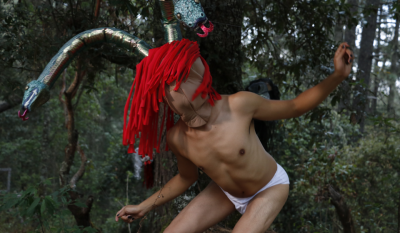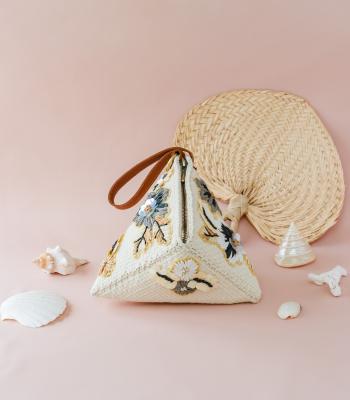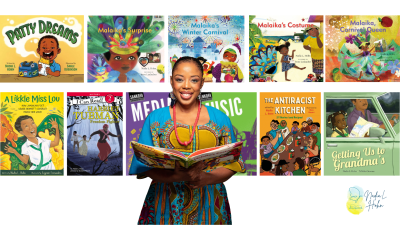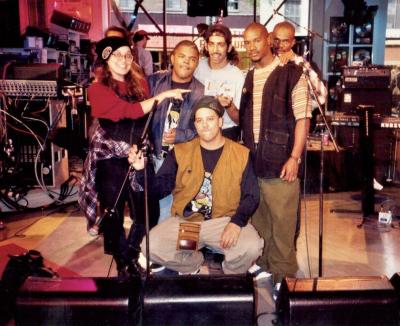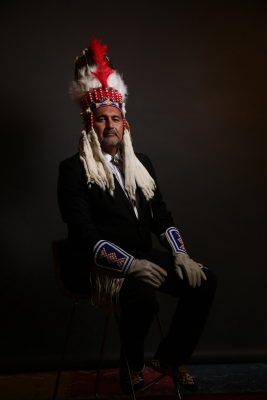Adrian Stimson on His Upcoming McCready Lecture
The artist reflects on his practice and Norval Morrisseau before his McCready Lecture at the AGO
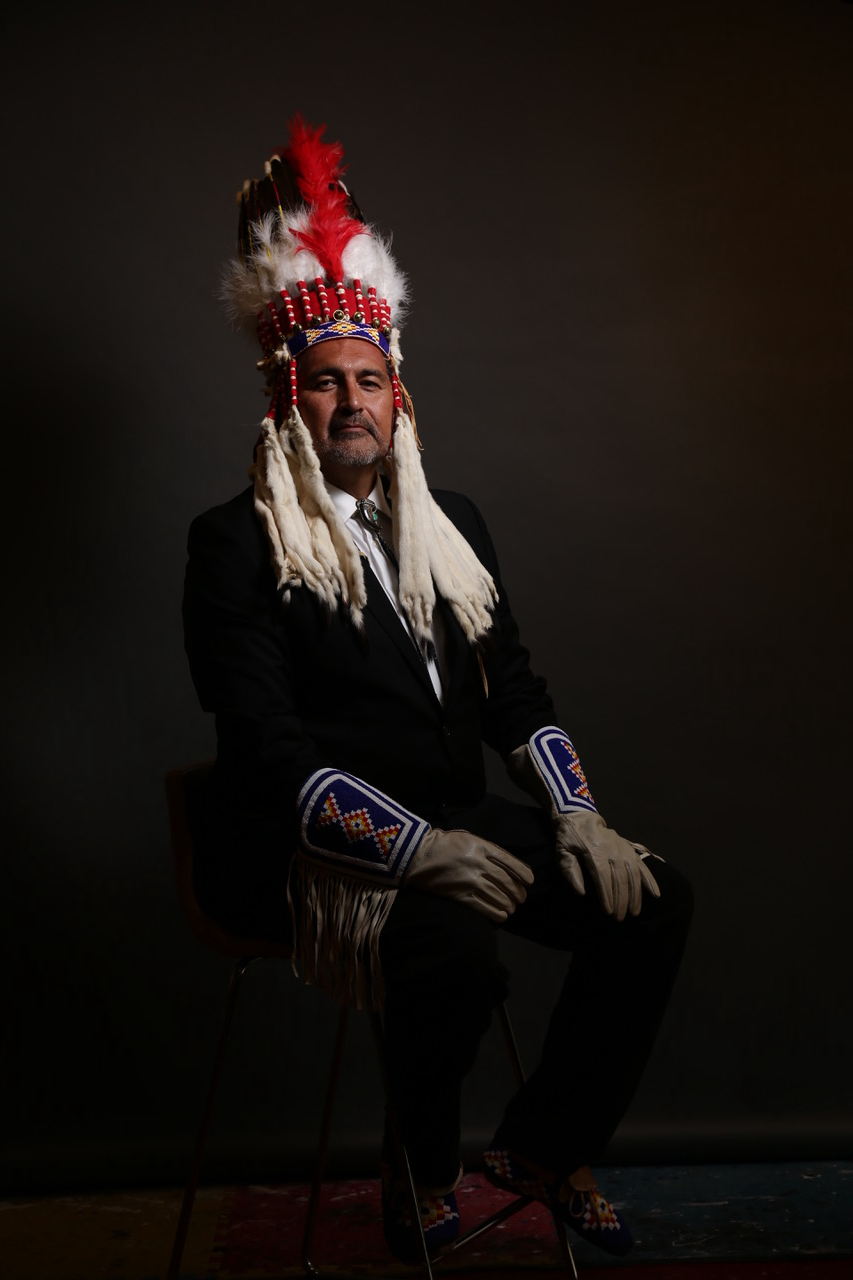
Photo credit Blair Russell
Adrian Stimson is a formidable interdisciplinary artist. His practice traverses photography, performance, painting, video, installation, and now journalism. He hosts the new CBC podcast Forged, unearthing a years-long trail of criminal art counterfeits committed against legendary Indigenous artist Norval Morrisseau. Stimson’s preparatory research for the show led him to the AGO’s extensive Morrisseau archive earlier this year. On Friday, November 7, the AGO welcomes Stimson back, this time with the distinct honour of delivering a McCready Lecture on Canadian Art live from Baillie Court.
Stimson is a member of the Siksika Nation, Treaty 7 in Southern Alberta. Exhibited internationally, his work utilizes a broad range of artistic media to convey stories about the historical and contemporary experiences of Indigenous Peoples. Through his often-recurring performance personas Buffalo Boy and The Shaman Exterminator, Stimson explores the hybridization of the Indian, cowboy, shaman and Two Spirit being. This year, his acclaimed public art practice has garnered prestigious commissions to design the National Monument to Canada’s Mission in Afghanistan in Ottawa and the Indian Residential School Memorial in Calgary.
Stimson spoke to Foyer about the legacy of Norval Morrisseau, his practice at large, and what attendees can expect from his McCready Lecture.
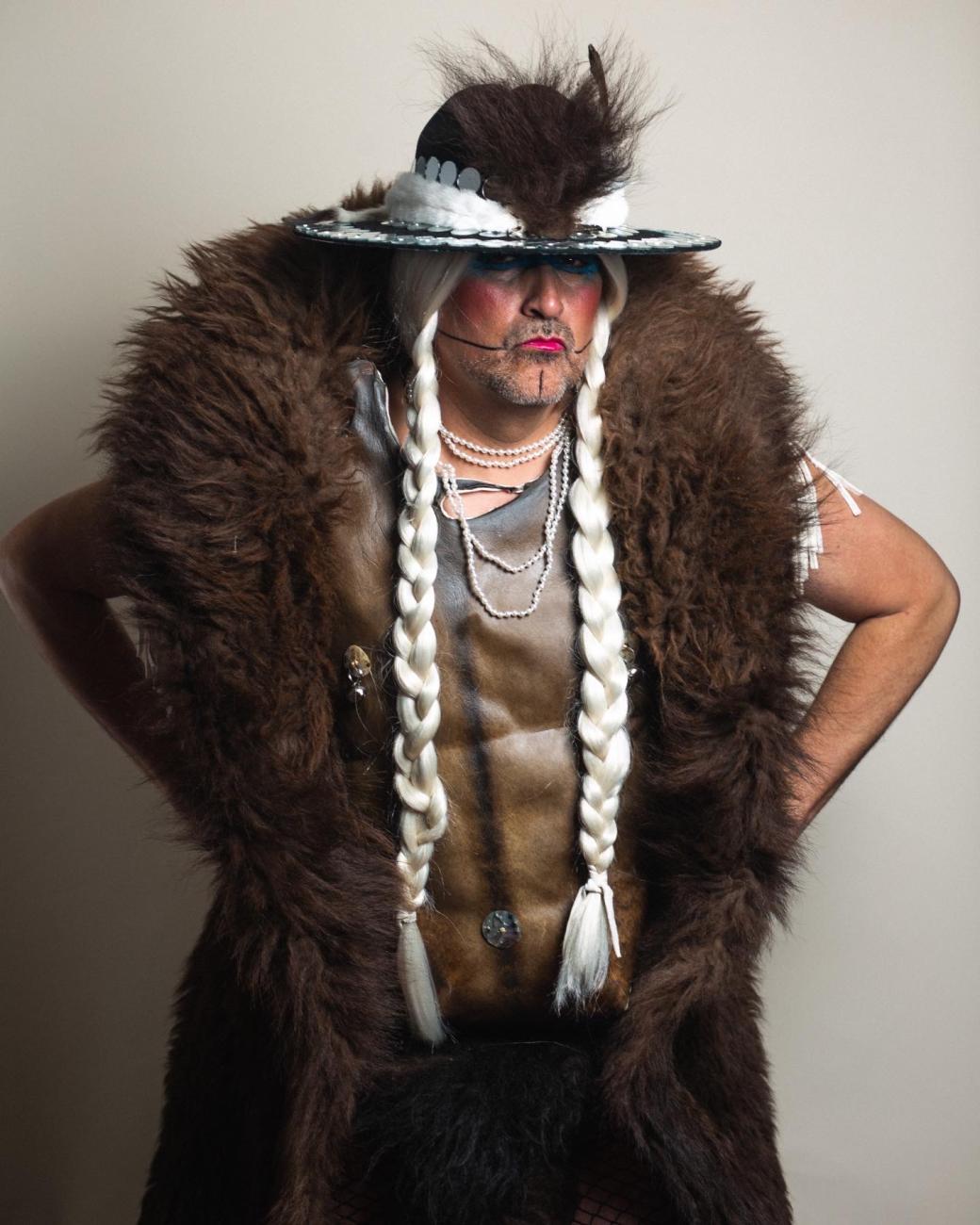
New Born Buffalo Boy, 2022. Adrian Stimson. Image courtesy of Adrian Stimson.
Foyer: Norval Morrisseau is considered one of the most influential Indigenous artists of all time. Can you share some of your personal connection to him and how specifically his work has impacted you?
Stimson: Being Indigenous in this country, Morrisseau’s work has always been present for me. I was born in Sault, Ste Marie, Ontario, and of course, that is Morrisseau’s territory – around Lake Superior (Gitche Gumee), the Canadian Shield and the forest. I'm familiar with that sort of landscape. The woodland style that he created always resonated with me. As a child, I remember how the colour in his work really stuck with me. I think the vibrant reds and whites and yellows really appealed to my younger eyes. I also remember while growing up that people would talk about him in a casual way, as a well-known “Indian” artist.
As an adult when I became involved with the professional art world – particularly the Indigenous art world – Morrisseau’s work was always there. You learn about him academically; his history, his style, his legacy. As a painter myself, he quickly became a hero and icon for me. As I progressed further into the art world, I was lucky enough to meet and spend time with members of the Indigenous Group of Seven. I met Daphne Odjig. Alex Janvier, who was a very good friend of mine. And I did get to meet Morrisseau once. I attended an exhibition at the National Gallery of Canada and met him very briefly. By that time, his Parkinson’s was taking over, so it was a short contact, but I can say I was in his presence. I was in awe of his life and work.
It's been a lifelong journey. From childhood, to becoming a professional artist and studying him, to having an opportunity to meet him, and now, into sharing this aspect of his history with Forged.
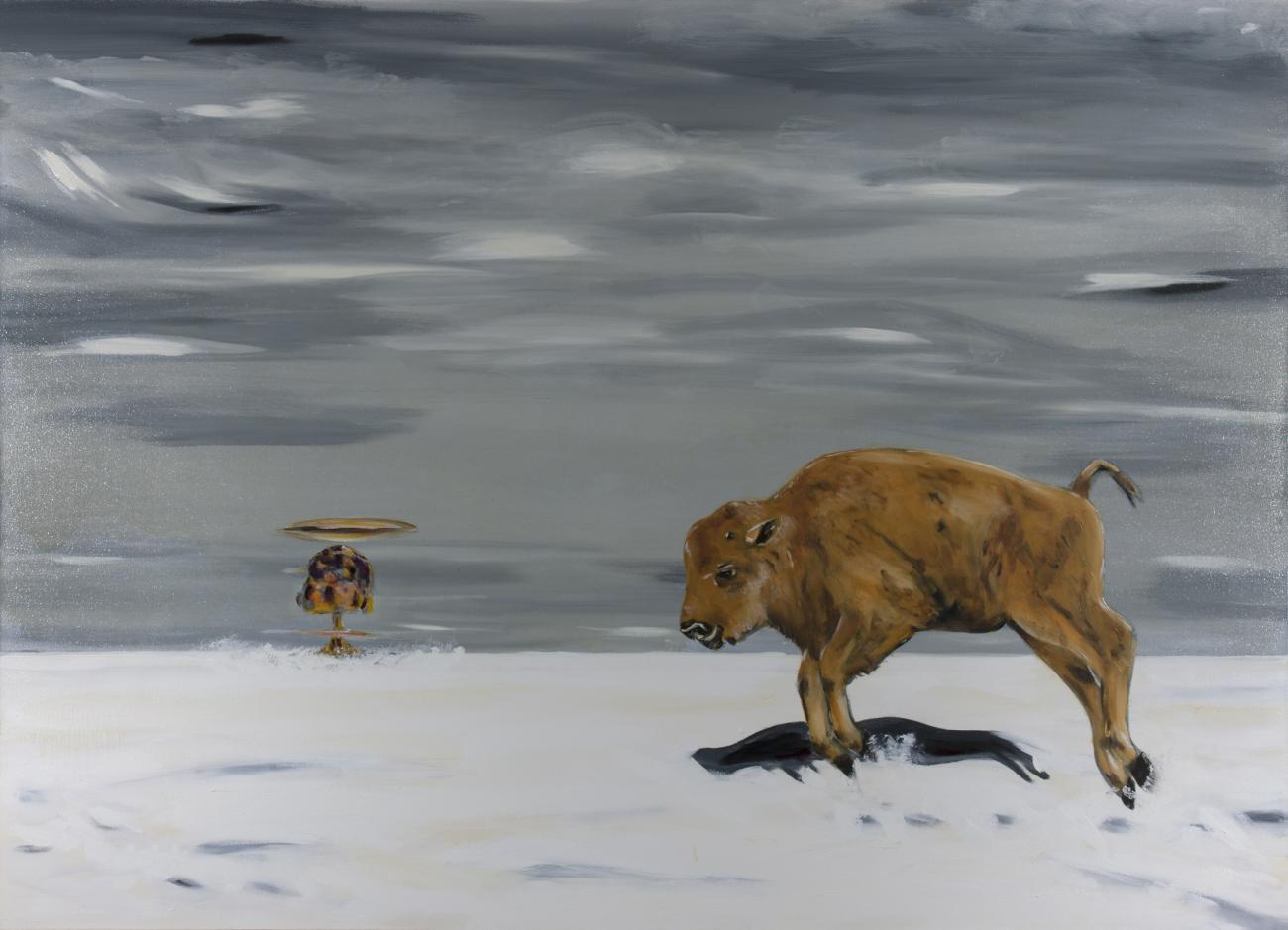
Manifest Buffalo: A Bison Dream, number 14, 2022. Adrian Stimson. Image courtesy of Adrian Stimson.
Earlier this year, you had the chance to visit the AGO’s Norval Morrisseau archive. Can you talk about your experience exploring the archive and share some highlights of that day?
What a great opportunity. Thank you to the AGO for the access to those files. Interestingly, a lot of what I read down there was written in context with historical slides of his older works. It was fascinating to look at some of those older works and, in a way, see his trajectory as an artist.
In terms of highlights, for me, it was going into Jack Pollock's diaries and hearing the descriptions of Morrisseau. They were from the very beginning of Morrisseau’s career, when he had his first exhibition in 1963. Those moments when you are holding the actual written documents are so special. It feels like being in direct contact with history.
I think also just looking at his works and having the opportunity to do a deep dive into his style was a highlight. We got to take a closer look at the six-panel work, Man Changing into Thunderbird, just as it was being installed. Part of my team’s process was for me to describe the works, and that was a great opportunity to challenge my own thoughts and perceptions about art, and Indigenous art in particular. It was such a wonderful opportunity to get up close and personal with Morrisseau.
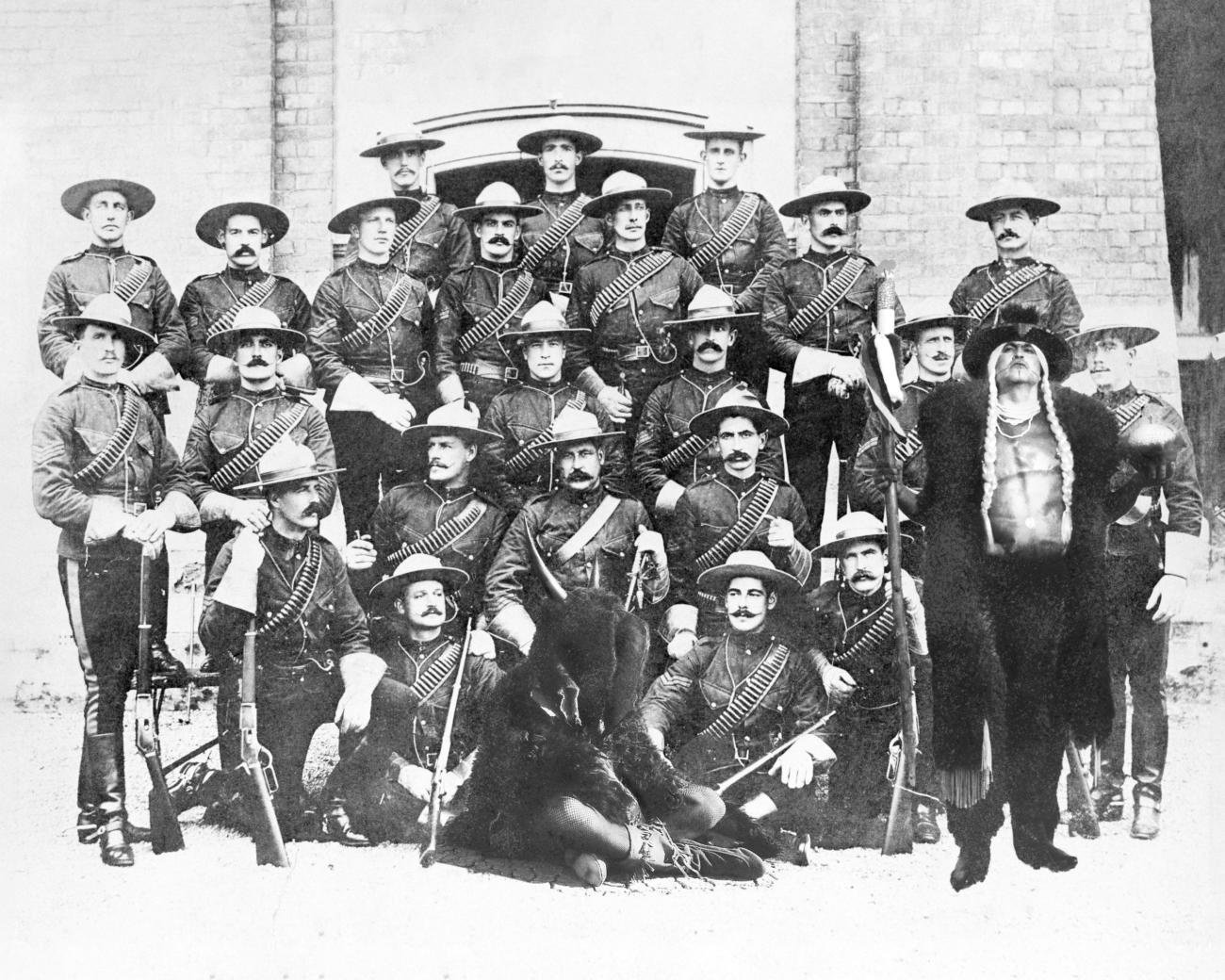
Dark Chambers, 2025. Adrian Stimson. Image courtesy of Adrian Stimson.
Your interdisciplinary practice includes painting, performance, installation, video and now journalism. With such a broad spectrum of potential topics, what will be your areas of focus for your McCready lecture?
I’d first like to say I’m thankful to the AGO for inviting me to the lecture. I’m thinking of it mostly as an artist talk, so I’ll begin by speaking about the interdisciplinary nature of my practice. I’d like to do a deep dive into my performance art and resulting photographic documentation, specifically my persona characters Buffalo Boy and The Shaman Exterminator. That will be a fitting segue into my recent exhibition Dark Chambers [at The Confluence Historic Site, Calgary] in which I created reactions to historic RCMP images. That work is really a comment of the colonial project. I’d like to delve into the history of my painting work briefly as well.
Public art has become a major part of my practice, so I’ll speak about that work. My team and I have recently been awarded the National Monument to Canada’s Mission in Afghanistan, which is a major honour for us. I'm a former Able Seaman with the Canadian Navy, so I have a military history, and I was also embedded with the troops in Afghanistan. Another recent honour was being awarded the Indian Residential School Memorial in Calgary. For me, there is an interesting full circle of having attended a residential school and now experiencing the deep honour of being awarded this public work.
Of course, I plan to touch on Morrisseau as well, and what this past year working on Forged has led me to understand about his life. Additionally, from an artist perspective – both Indigenous and non-Indigenous – I’d like to discuss the lack of protections we have in relation to our work. There’s copyright, but there’s not really any legislation that protects us. I’ll also point to the criminality within this story – the cold case murder, the malicious forgery – and how it’s important to keep those elements in the public mind. Because, like many things, as time passes new information comes to light and it makes solving these cases more possible.
All and all, I’m hoping to tell my story. The intention is that, within it, I can speak to the history of Canada and being Indigenous in this country, which is what my art really focuses on.
Adrian Stimson’s McCready Lecture on Friday, November 7, in the AGO’s Baillie Court. Book your free tickets here. New episodes of the six-part CBC Podcast Forged air weekly on all streaming platforms.
